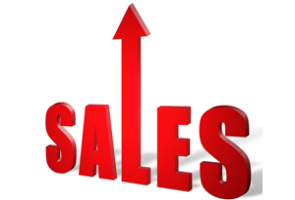Landing pages, squeeze pages, long-form sales letters, video sales letters, ads, emails … it’s enough to make your head spin. Sales are the primary goal of so many different kinds of copy that it’s hard to know where to start when it comes to optimization. Sure, there’s SEO, but as I’ve stated before, that’s a long-term solution. What I want to talk about today is getting short-term results.
1. You Need a Map
The first step in optimization is to make certain that there is consistency in the way you communicate your brand message. The same concepts and themes should thread through all of your sales copy. Is there a central concept or story behind your product that you think will motivate the right people to engage with your sales copy? If so, that needs to be communicated in everything from the initial CPC ad to your landing page, to your opt-in box for your email list, to the messages you send in emails, and the list goes on.
Let’s use the example of herbal supplements. Let’s say you want to target people 45-54 both male and female with an herbal supplement that promises to help with various problems associated with aging. Assuming you’ve done your research on your demographic, you should be able to zero in on one key concept that can be powerfully conveyed verbally as well as visually. The visual aspect is easy: healthy middle-aged people who are energetic and look happy.
Your copy has to answer the question why they’re so energetic and happy, and the concepts of energy and happiness need to be the running thread. This is why you need to map out how you’re going to present your message. Without that, it’s easy to go off on tangents and start talking about features and benefits that don’t match the central theme.
2. Find Different Ways to Say the Same Things
You should employ language that occurs in all of your copy that ties everything together. I’m not talking about catch phrases, but rather similar phrases that employ a good mix of synonyms that help the reader not feel like you’re constantly repeating yourself. People can be energetic. They can also be “always on the go” or “particularly active.” People can be happy, or they can be content. They can also be satisfied.
All of these words convey the same basic message but make different connections in the mind of the reader. You want this because the more aspects of their lives to which your brand relates to them, the more likely they are to eventually click that all-important “buy now” button.
3. Promise and Deliver
Please don’t bother with the former if you can’t handle the latter. Make realistic promises when it comes to your product. Supplements can be a touchy subject because the effects and results can be very subjective. I’ve seen VSLs that claim herbal supplements can cure diabetes and cancer, and while they never come right out and say that it’s a done deal, they sure tread close to the line.
That’s the point I want to make here: You need to decide how close to the line you actually can tread without blowing your credibility. If you could cure cancer with a vitamin, the world would have caught on by now, so don’t embarrass yourself. Instead, tell your reader “recent studies have suggested that people who take supplement X have fewer relapses after going into remission.” If it’s true and you can cite your sources, that gives you a lot of credibility, which brings me to my next point …
4. Position Yourself as an Authority. Always.
Your sales copy has to communicate clearly that you are an expert in your niche; otherwise, people will find it difficult to trust you or spend their money with you. With this in mind, there are three ways to communicate this concept in sales copy.
First, prove that you’ve done your research by providing both analytical and social proof. You do this by researching your product or the demographic that would benefit most from it and developing a body of evidence that whatever you’re selling has particular value and benefit in that niche. Second, always cite sources. Make them verifiable. Link to them. Use real searchable quotes from credible sources. If you’re selling supplements, see what sources like the Mayo Clinic have to say about their health benefits. That will get you further than an endorsement from a fake doctor (there is a huge lot of that going on right now). That statement ties in well to my next point again …
5. Use Only Real Testimonials
The worst thing you can possibly do is seed your sales copy with false information or fake testimonials. I’ve often sat reading product launch copy with testimonials and wondered how so many people already knew how great the product was if it hadn’t hit the market yet. Granted, many people won’t think that far into it, but if your claims prove to be different than the experience of the user, you will have trouble establishing and maintaining trust. Keep it real. Wait for the real accolades to start rolling in, and then get your mileage out of them through landing pages and, in particular, emails. The last is the most effective option.
6. Be Sure to Write Good Headlines and Subject Lines
I’ve done an entire blog on this before, so feel free to take a look at it for an in-depth explanation as to why this is so important. Right now, as someone who runs a successful copywriting company, I’ll just say this: It’s very, veryimportant.
That last one, I think, is really the most important, so check out that post if you haven’t already. You then want to build on that foundation with the effective use of the other five elements. Do that, and we think you’ll find that your sales copy proves to be much more effective overall.
